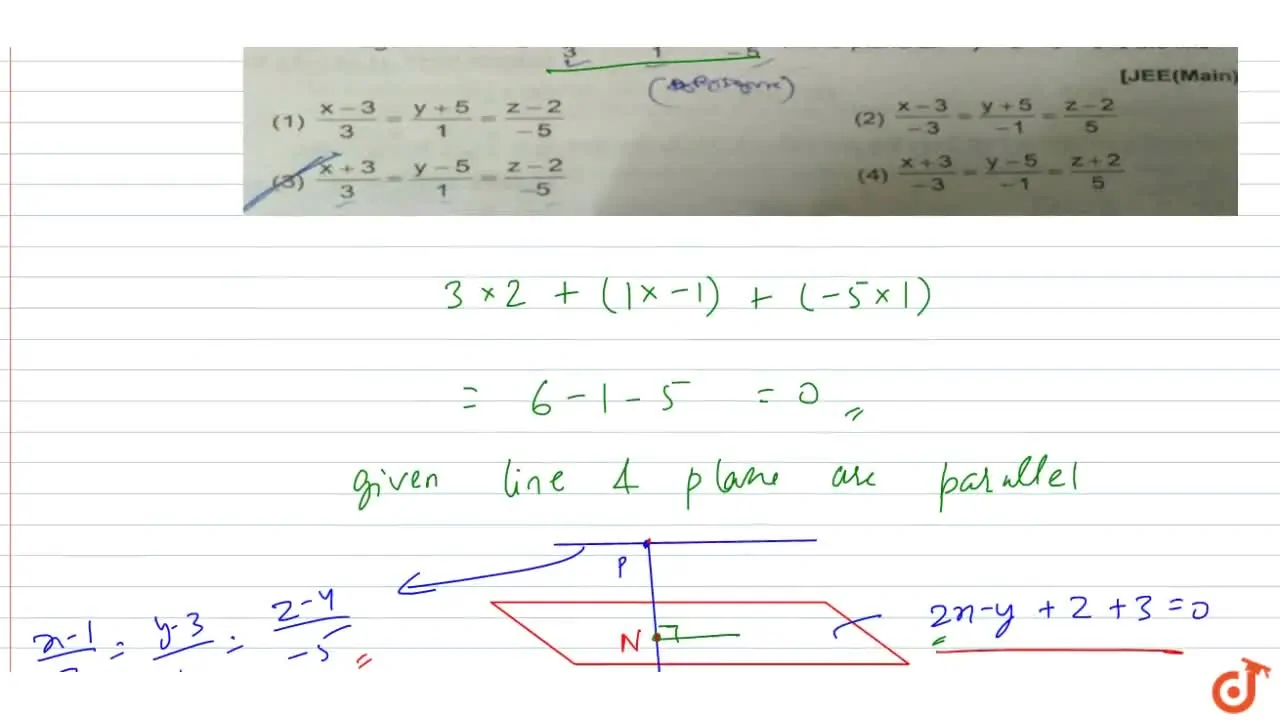The image of the line x−13=y−31=z−4−5 in the plane 2x−y+z+3=0 is the line (1) x+33=y−51=z−2−5 (2) x+3−3=y−5−1=z+25 (3) x−33=y+51=z−2−5 (3) x−3−3=y+5−1=z−25
Step by step video & image solution for The image of the line (x-1)/3=(y-3)/1=(z-4)/(-5) in the plane 2x-y+z+3=0 is the line (1) (x+3)/3=(y-5)/1=(z-2)/(-5) (2) (x+3)/(-3)=(y-5)/(-1)=(z+2)/5 (3) (x-3)/3=(y+5)/1=(z-2)/(-5) (3) (x-3)/(-3)=(y+5)/(-1)=(z-2)/5 by Maths experts to help you in doubts & scoring excellent marks in Class 12 exams.
Related Playlists
Similar Questions
The image of the line x−13=y−31=z−4−5 in the plane 2x−y+z+3=0 is the line (1) x+33=y−51=z−2−5 (2) x+3−3=y−5−1=z+25 (3) x−33=y+51=z−2−5 (3) x−3−3=y+5−1=z−25
View SolutionThe distance between the line x−21=y−31=z−45 and the plane 2x+3y−z+5=0 is
View SolutionThe angle between the line x−21=y+3−2=z+4−3 and the plane 2x−3y+z=5 is
View SolutionThe line x−31=y−42=z−52 cuts the plane x+y+z=17 at
View SolutionPerpendiculars are drawn from points on the line x+22=y+1−1=z3 to the plane x+y+z=3 The feet of perpendiculars lie on the line (a) x5=y−18=z−2−13 (b) x2=y−13=z−2−5 (c) x4=y−13=z−2−7 (d) x2=y−1−7=z−25
View SolutionThe lines x−21=y−32=z−43andx−1−5=y−21=z−11 are
View SolutionFind the angle betweenthe line x−2−1=y+32=z+43 and the plane 2x−3y+z=5.
View SolutionWhich of the following line is passing through point of intersection of line x−42=y−32=z−51 and the plane x+y+z=2 (a) x2=y+13=z−34 (b) x−23=y−13=z−32 (c) x2=y+13=z−24 (d) x−22=y+13=z+34
View SolutionShow that the lines x+3−3=y−11=z−55and x+1−1=y−22=z−55are coplanar.
View SolutionIf the line x−12=y+31=z−5−1 is parallel to the
plane px+3y−z+5=0, then the value of p -View Solution


